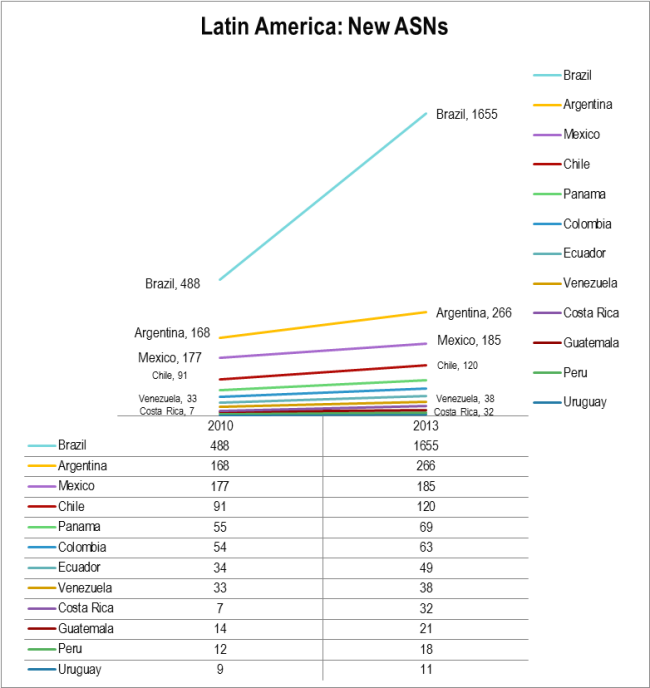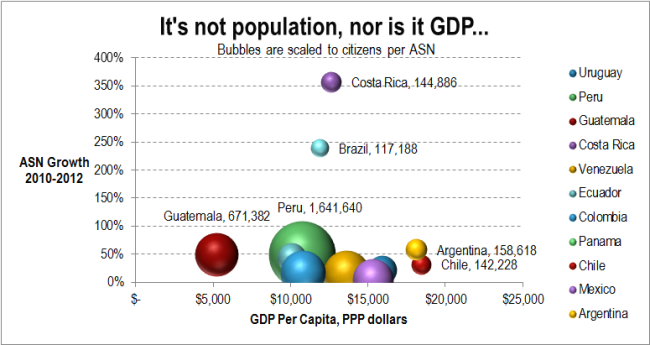Telco 2.0™ Research
The Future Of Telecoms And How To Get There
The Future Of Telecoms And How To Get There
| Summary: The success of digital economies is underpinned by the growth of the Internet. Our analysis of a number of economies shows that enlightened policy is more important than the wealth of the populace or any other measure. What are the key lessons? (March 2014, Executive Briefing Service). |
|
Below is an extract from this 14 page Telco 2.0 Report that can be downloaded in full in PDF format by members of the Telco 2.0 Executive Briefing service here. Non-members can find out about the service and how to subscribe here. For other enquiries, please email / call +44 (0) 207 247 5003.
We'll be discussing the findings further at the Onfuture America 2014 Brainstorm (May 20-21, Mountain View) including insights on AT&T, Verizon, and the Telco 2.0 Benchmarking study.
To share this article easily, please click:
Recent data on the growth of the Internet shows that different public policies have dramatically different impacts. In Latin America, two nations following very similar policies are achieving spectacular success, both in terms of raw quantity and in terms of deeper qualitative improvement, while other countries, sometimes with higher per-capita GDP, pursue different policies and see radically worse results.
In the Middle East, there is evidence of a similar breakout to development in some surprising countries, which turn out to be adopting key elements of the policy mix that has been successful in Latin America.
Renesys, a US company which provides software tools to monitor Border Gateway Protocol BGP routing activity, also collects large amounts of data on the structure of the Internet as a by-product of this activity. In May 2013, they issued a fascinating blog post on the Latino Internet, which drew attention to the dramatic development gap emerging between – for example – Brazil and Argentina on one hand, and Mexico on the other.
What Renesys was looking at was the count of ASNs (Autonomous System Numbers) over time, a measure that we believe gives an excellent and profound indication of the development of the internet.
ASNs identify networks that control their own routing policy and IP address block. The voluntary interconnection of autonomous systems through BGP routing, which is based on AS numbers, makes up the fundamental structure of the Internet. In this sense, counting ASNs is a better metric than counting subscribers, domain names, Web sites, or IP addresses, because it is a measurement of participation in the Internet, not just consumption of cat videos and Google adverts. The creation of new ASNs is evidence that new businesses, organisations, content providers, hosting and cloud computing providers, and ISPs are emerging. It is evidence that technical competence is diffusing through society.
Because an ASN is the entry ticket to Internet peering, it's also evidence of growing direct interconnection between networks, the fundamental purpose of the Internet, and the source of reliable, resilient, and high-performance service. In important ways, more AS numbers shows not just quantitative growth, but also qualitative improvement.
So how does the scoreboard look?

Source: Renesys data, STL Partners visualisation
Argentina is doing well; Brazil is doing incredibly well; Mexico is either stable, or stagnant. We’ve labelled the chart selectively, so you can also see that among the poorer and smaller Latin American nations, Costa Rica is doing very well while Venezuela is doing poorly.
Mexico’s per-capita GDP at purchasing-power parity was calculated at $15,312 in 2012 dollars by the IMF, whereas Argentina’s was $18,112. But this gap doesn’t explain what’s going on here. Brazil’s was $11,875, and the Brazilian Internet is doing even better. Clearly, money is not enough. Every year, Brazil adds as many ASNs as there are in the whole of Mexico. This is a reflection of vastly different government policy and market structure. Similarly, there doesn’t seem to be any reliable link between population, ASN growth, or how many citizens there are for each ASN, as the following chart shows. Even GDP is a very weak predictor.

Source: STL, IMF data, ANATEL
To read the note in full, including the following additional analysis...
...and the following figures...
...Members of the Telco 2.0 Executive Briefing Subscription Service can download the full 14 page report in PDF format here. Non-Members, please subscribe here. For other enquiries, please email / call +44 (0) 207 247 5003.
Technologies and industry terms referenced include: Policy, Internet. Iran, Mexico, Brazil, Argentina, ASN, ISP, Economy, Transit, Censorship, GDP, Latin America, Middle East.